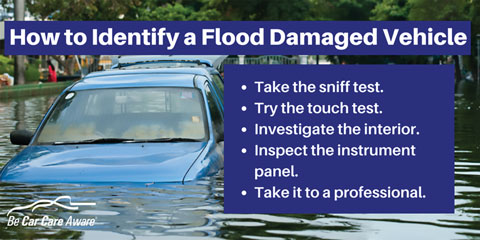
January 29, 2018
Changing the oil and oil filter, replacing wiper blades and air filters, and scheduled maintenance top the list of the 10 most common vehicle repairs of 2017.
According to research conducted by IMR Inc., an industry leader in automotive research, the top 10 most common vehicle repairs performed by vehicle owners and their trusted repair shops are shown on the right:
“We thank IMR for sharing this important and informative data with the Car Care Council,” said Rich White, executive director, Car Care Council. “With scheduled maintenance toward the top of the list, these findings are a sign that more motorists understand the importance of routine vehicle maintenance and are taking steps to ensure the safety and dependability of their vehicles.”
.................................................................................................................................................................

January 4, 2018
When it comes to winter car care, many motorists think of antifreeze and batteries, but vehicles need extra attention in winter, especially when a bomb cyclone hits and temperatures drop.
“Most people never heard of ‘bombogenesis” until heavy snow and dangerous cold recently hit many areas of the country, including several states that usually don’t experience this type of severe weather,” said Rich White, executive director, Car Care Council.
“Making sure your vehicle is properly prepared for the elements will help you avoid the aggravation of an unplanned road emergency.”
The non-profit Car Care Council offers six quick tips to help your vehicle perform at its best during cold weather months.
Drivers should stock an emergency kit with an ice scraper and snow brush, jumper cables, flashlight, blanket, extra clothes, bottled water, dry food snacks and needed medication. The Car Care Council also recommends a thorough vehicle inspection by a trusted professional service technician as winter magnifies existing problems such as pings, hard starts, sluggish performance or rough idling.
...................................................................................................................................................................
Motorists may not know much about their fuel pump but over the life of owning a vehicle, it will probably need to be replaced.
One area that often gets overlooked when putting in a new fuel pump is cleaning the gas tank. The Car Care Council recommends that when it comes time to replace your fuel pump, that you have your gas tank cleaned thoroughly to avoid damaging your replacement fuel pump. A clean fuel tank can also ensure maximum engine performance and fuel efficiency.
“While a vehicle’s fuel pump is not a routine maintenance item, it will likely need to be replaced at some point while you own a car,” said Rich White, executive director, Car Care Council.
“Before replacing a defective fuel pump with a new one, the fuel tank should be properly cleaned to clear old debris, dirt and contaminants that have accumulated at the bottom of the tank.”
Whether performed by a professional service technician, or you do it yourself, follow this 10 step process to clean your gas tank properly and avoid damaging your new fuel pump.
“The original fuel pump that came with your vehicle when you purchased it went into a clean gas tank so it only makes sense to put your replacement fuel pump into a clean gas tank as well,” said White.
“Cleaning the gas tank will not only improve engine performance, but it will also lead to better fuel economy so you pay less at the pump – a goal of most vehicle owners.”

..............................................................................................................................................................

Following one of the worst hurricane seasons in years and record setting rainfall in many areas of the country, flooding has taken its toll on vehicles. It is important for those considering the purchase of a used vehicle to be car care aware and check for signs of water intrusion or contamination, says the non-profit Car Care Council.
“Purchasing a used vehicle and later learning it has been flood damaged can be very problematic and lead to costly issues down the road. Worst yet, these vehicles can be unhealthy to occupy because of mold and bacteria growing in the carpet and ventilation system,” said Rich White, executive director, Car Care Council.
The Car Care Council and the Car Care Professionals Network (CCPN), a network of professional automotive service providers, say it all comes down to how much water the vehicle took in and where it can be reached. As well, they recommend taking the following steps to determine if a vehicle has been flood damaged:
he Car Care Council is the source of information for the “Be Car Care Aware” consumer education campaign promoting the benefits of regular vehicle care, maintenance and repair to consumers. For the latest car care news, visit the council’s online media room at http://media.carcare.org. To order a free copy of the popular Car Care Guide, visit the council’s consumer education website at www.carcare.org.